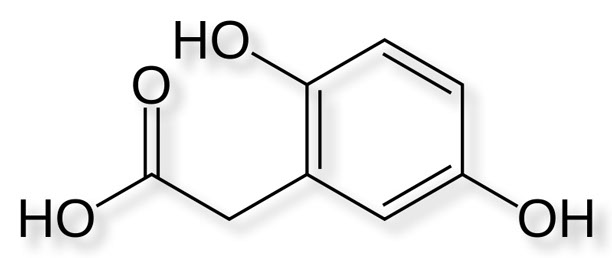Last week, we announced that we are creating the first open, global registry for alkaptonuria (AKU), in collaboration with the AKU Society. You may not have heard of this extremely rare disease – which causes a severe, early-onset form of osteoarthritis – but it plays an important role in the history of genetic diseases. In fact, AKU, which is estimated to affect 1 in 250,000 to 500,000 people, was the very first genetic disease identified in the scientific record. Strangely, though, the scientific community failed to recognize this landmark discovery until much later.
In 1902, Sir Archibald Garrod, a British physician interested in childhood diseases, published a paper describing the hereditary nature of AKU in The Lancet. After observing the frequent occurrence of AKU in siblings, Garrod came to believe that the condition was congenital and possibly hereditary. Using chemical studies, he set out to disprove the existing theory that AKU was infectious – and succeeded. By 1908-1909, he’d expanded his radical notion of lifelong hereditary disease to other rare disorders: albinism, cystinuria and pentosuria. In lectures and publications at the time, he became the first person to describe a human condition that followed Mendelian inheritance patterns, the first to propose the concept of recessive inheritance, and the first to mention the importance of consanguinity, or the genetic similarity of blood relatives who marry and reproduce.
As a result of these significant discoveries, Garrod (who passed away in 1936) is now considered the first human geneticist, as well as the father of “inborn errors of metabolism,” an expression he coined. Yet Garrod’s pioneering work was not appreciated during his lifetime. Part of this may be due to the fact that the term “genetics” itself – as well as the principles behind it – had not yet been formulated when he was alive. He was far ahead of his time. According to a 2008 article published in the Journal of Inherited Metabolic Disorders, Garrod “can rightly be deemed one of the most profound intellectuals of the 20th century, whose bequests to science and medicine continue to increase in value.”
Despite over 100 years of study since Garrod’s 1902 publication, there is still no cure for AKU. Through our new registry – which will bring together AKU patients from around the world, patients who may have never met another AKU patient like themselves – we hope to help both patients and researchers answer fundamental questions and accelerate research focused on this often painfully debilitating disease. What we will discover, together? Stay tuned.
Dronamraju K. Profiles in Genetics: Archibald E. Garrod. Am J Hum Genet. 51:216-219, 1992.
Rosenberg LE. Legacies of Garrod’s brilliance. One hundred years—and counting. J Inherit Metab Dis. 2008 Oct; 31(5):574-9.


Learn something more everyday regarding AKU – very interesting – and congrats on the new sweatshirts – very nice.